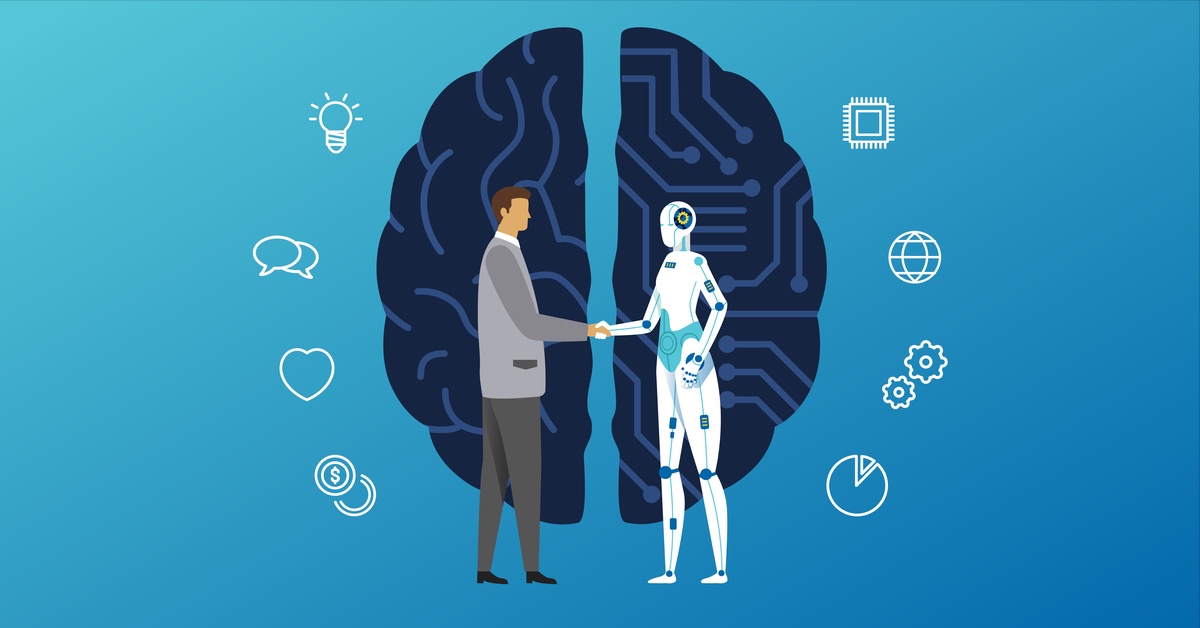Get ready to toss out your dusty filing cabinets and sharpen your digital pen. The procurement landscape is undergoing a seismic shift, powered by the unstoppable force of artificial intelligence (AI) and its trusty sidekick, machine learning (ML). Gone are the days of tedious manual tasks and gut-based decisions. This combination is here to revolutionize the way we source, negotiate, and manage everything from office supplies to rocket fuel.
So, how exactly is ML changing the procurement game? Buckle up, because we're about to dive into a world of:
-
Supercharged Efficiency:
Say goodbye to repetitive tasks: Imagine a world where purchase orders and invoices magically appear, contracts analyze themselves, and vendor selection happens with AI-powered procurement systems. ML automates the mundane, freeing procurement teams to focus on strategic sourcing and supplier relationships.
Error monsters, begone! ML algorithms are meticulous data detectives, sniffing out errors and inconsistencies in complex procurement processes. No more missed discounts or fraudulent transactions, just clean, reliable data to guide your decisions.
-
Predictive Powerhouse:
Forget spreadsheet based projections, ML lets you predict future demand with uncanny accuracy. Based on historical data and market trends, you can anticipate needs, optimize inventory levels, and avoid costly stockouts.
Risk radar on high alert: ML algorithms scan the horizon for potential supplier disruptions, price fluctuations, and market shifts. By identifying and mitigating risks before they turn into disasters, you can ensure a smooth and uninterrupted supply chain.
-
Cost-Cutting Champion
Savings you can actually see: ML analyzes spending patterns, identifies optimal pricing opportunities, and negotiates like a seasoned pro. Prepare to say hello to lower costs, better deals, and a happy CFO.
Waste not, want not: ML helps you optimize sourcing decisions, consolidate suppliers, and streamline your entire procurement process. This translates to less wasteful spending and a leaner, meaner procurement machine.
But wait, there's more! AI powered procurement systems also foster improved supplier relationships, streamlines compliance, and boosts overall transparency. It's a win-win-win for everyone involved.
Of course, adopting AI isn't just about snapping your fingers and wishing for a magic wand. It requires careful planning, data training, and a willingness to embrace change. But for those who dare to take the leap, the rewards are immense.
Unleashing the Power of Machine Learning in Procurement
ML algorithms, fueled by vast datasets, can identify patterns and make predictions with breathtaking accuracy. This translates to several transformative applications in procurement:
Demand Forecasting: ML analyzes historical data, market trends, and external factors to predict future demand with pinpoint precision. This empowers organizations to optimize inventory levels, mitigate stockouts, and negotiate better contracts with suppliers.
Spend Analysis: ML pories over purchase orders, invoices, and contracts, unearthing hidden spending patterns and identifying areas for cost savings. This includes opportunities for consolidation, price optimization, and supplier rationalization.
Automated Procurement Processes: Repetitive tasks like purchase order creation, invoice matching, and contract management can be seamlessly automated using ML-powered systems. This frees up procurement professionals' time for strategic activities like supplier relationship management and risk mitigation.
Enhanced Risk Management: ML algorithms can analyze supplier data, contracts, and external sources to identify potential risks like fraud, ethical violations, or supply chain disruptions. This allows for proactive mitigation strategies and ensures business continuity.
Next-Generation Sourcing: ML can scan vast supplier databases, identifying the most qualified vendors based on specific criteria like price, quality, sustainability, and location. This streamlines the sourcing process and promotes better procurement outcomes.
Getting started with AI in procurement
For organizations looking to take the leap to embrace AI and ML in their procurement processes, here's a quick starter guide:
A New Era of Procurement Dawns
Organizations turning to procurement data analytics represents a pivotal moment in the technological leap by this function. Companies are poised to:
- Reduce costs and optimize spend
- Enhance efficiency and agility
- Mitigate risks and ensure business continuity
- Foster stronger supplier relationships
- Gain a strategic edge in today's competitive landscape
As ML continues to evolve and permeate the procurement landscape, we can expect even more revolutionary advancements. Some exciting possibilities include:
Hyper-personalized Procurement: ML could personalize the procurement experience for individual departments or users, recommending specific suppliers, pricing options, and risk mitigation strategies tailored to their needs.
Autonomous Procurement Systems: Future procurement systems might operate with near autonomy, utilizing advanced ML algorithms to make real-time decisions on sourcing, pricing, and contract negotiations, while continuously learning and optimizing based on ongoing data analysis.
Rise of Explainable AI (XAI): As concerns about transparency and interpretability of AI models grow, XAI approaches will become increasingly important in procurement. XAI allows users to understand the reasoning behind ML-driven decisions, fostering trust and building confidence in the technology.
Navigating the ML Singularity
By embracing ML and proactively shaping its application in procurement, organizations can unlock a new era of efficiency, resilience, and competitive advantage. Polestar Solutions helps you to look beyond the future of procurement – which is no longer just about cost reduction; it's about data-driven decision-making, strategic partnerships, and building a sustainable supply chain for the future. Are you ready to join the revolution?


No comments yet